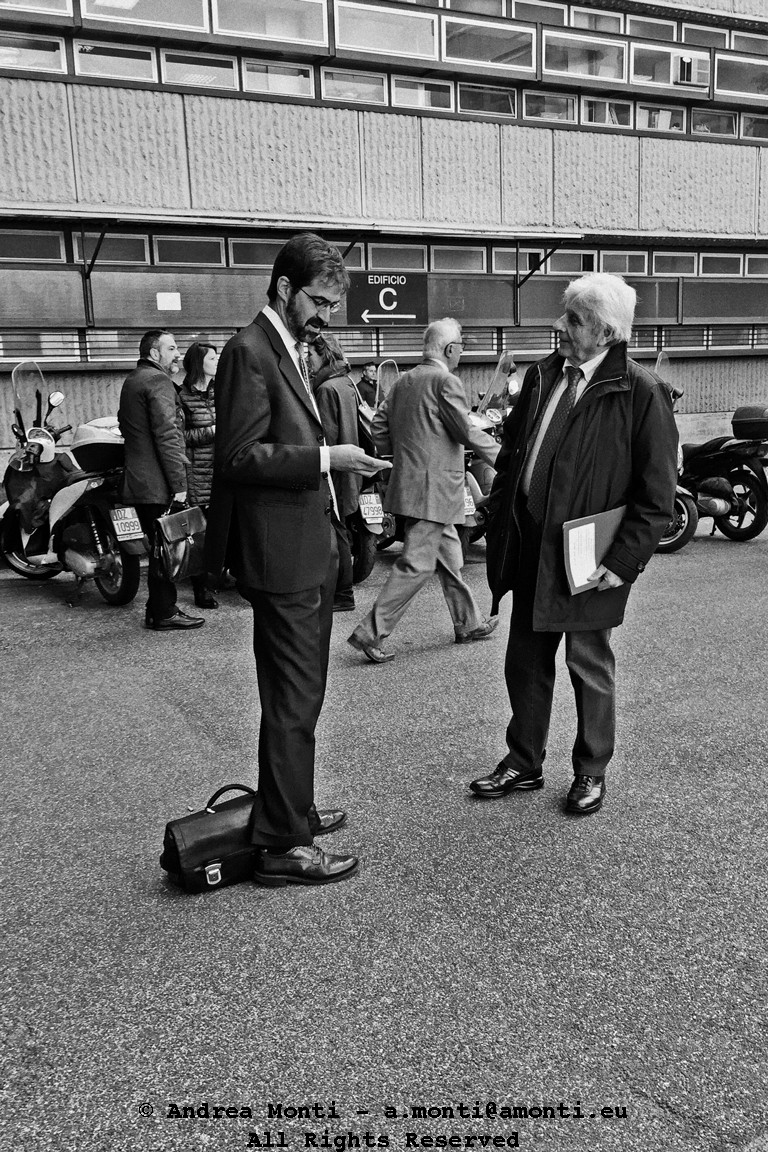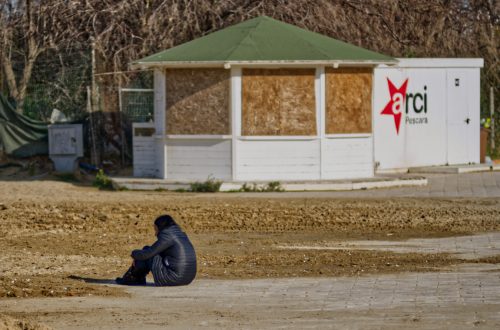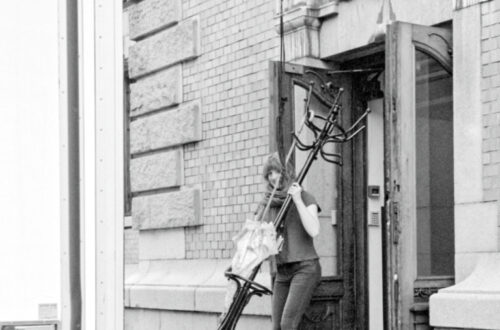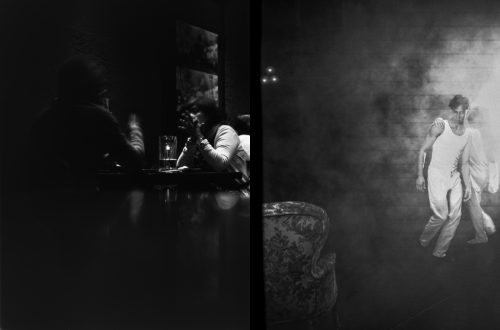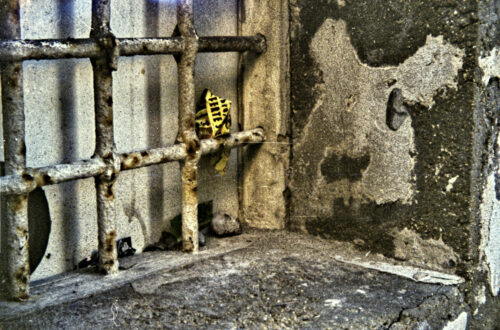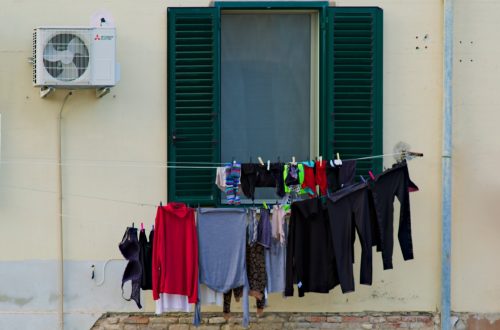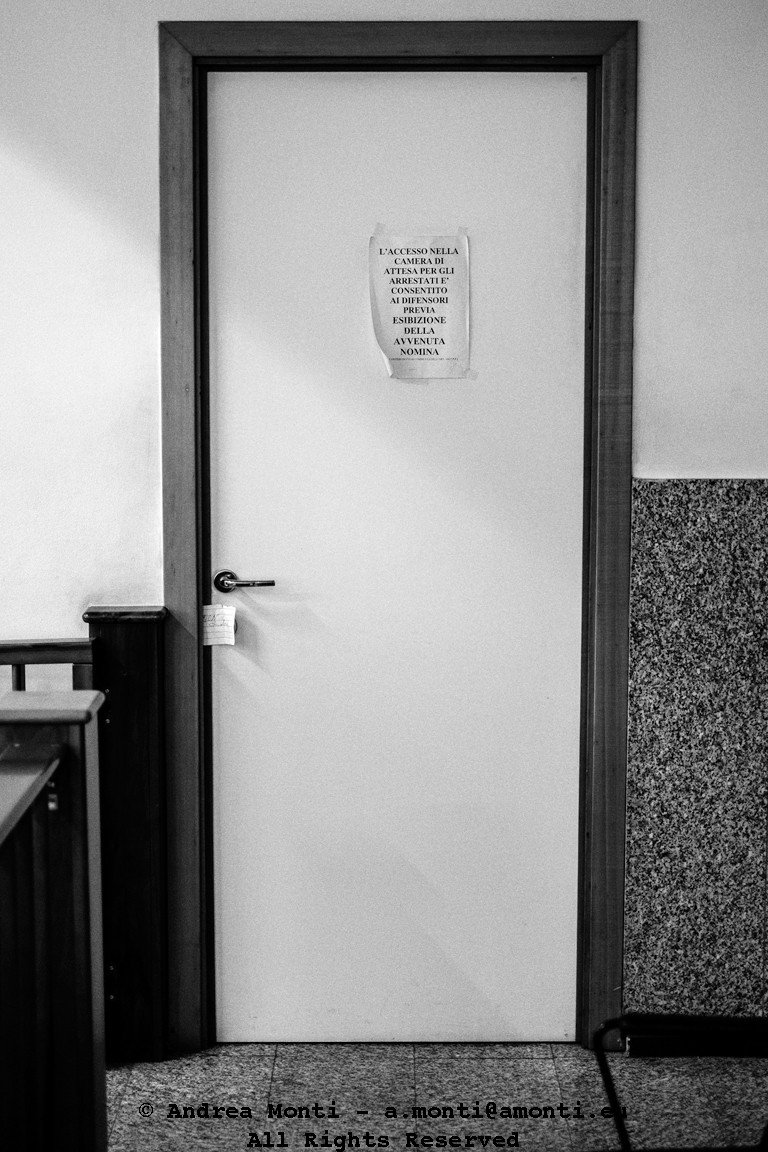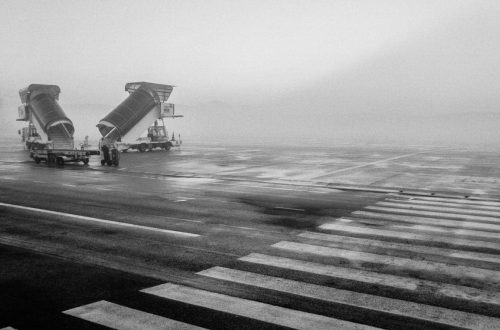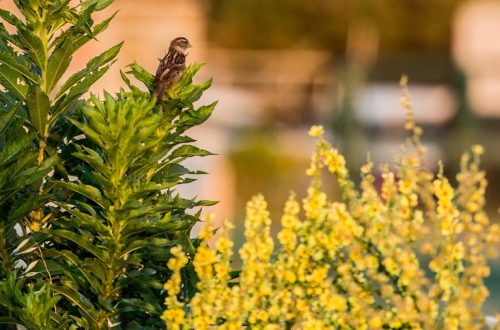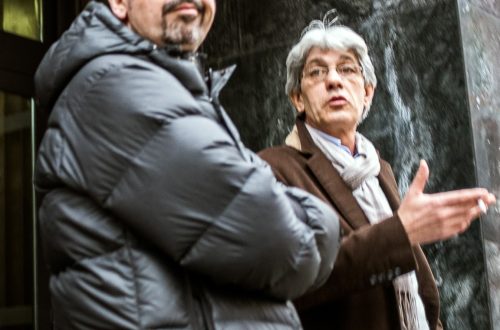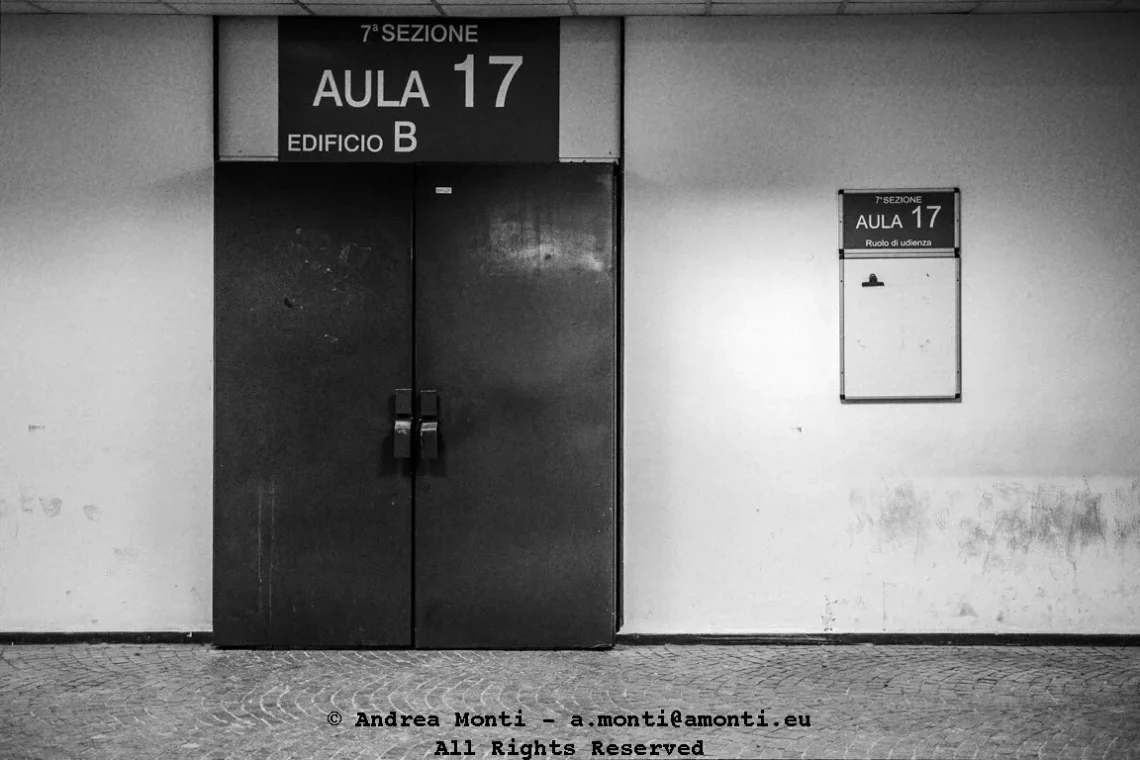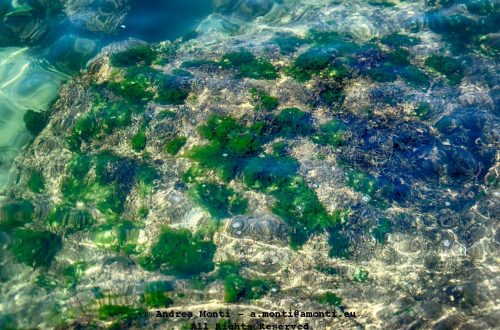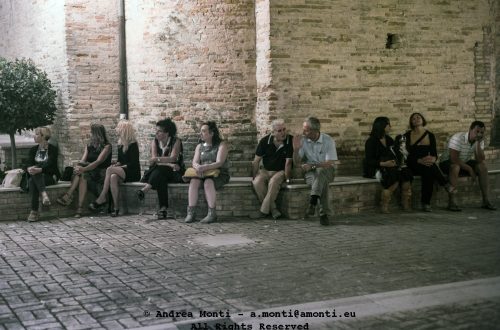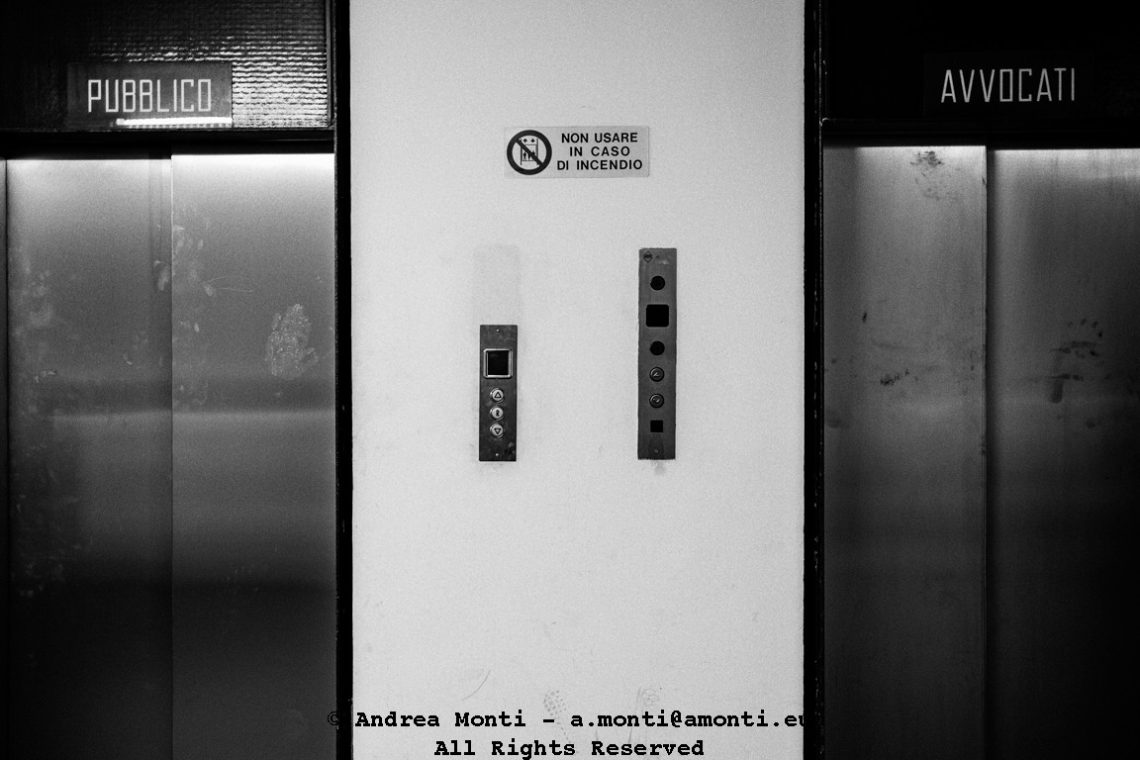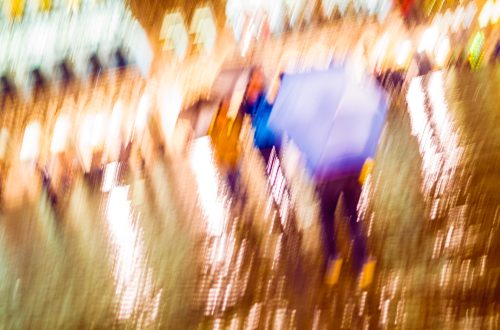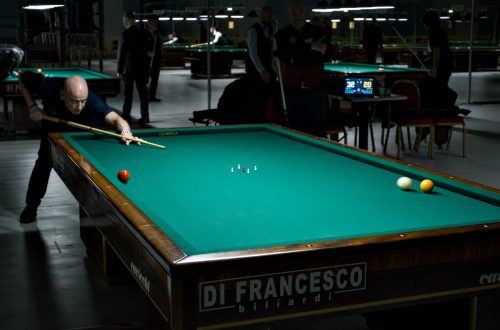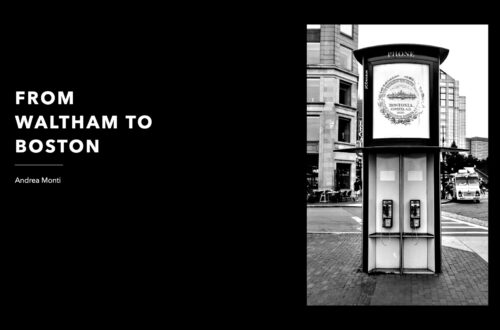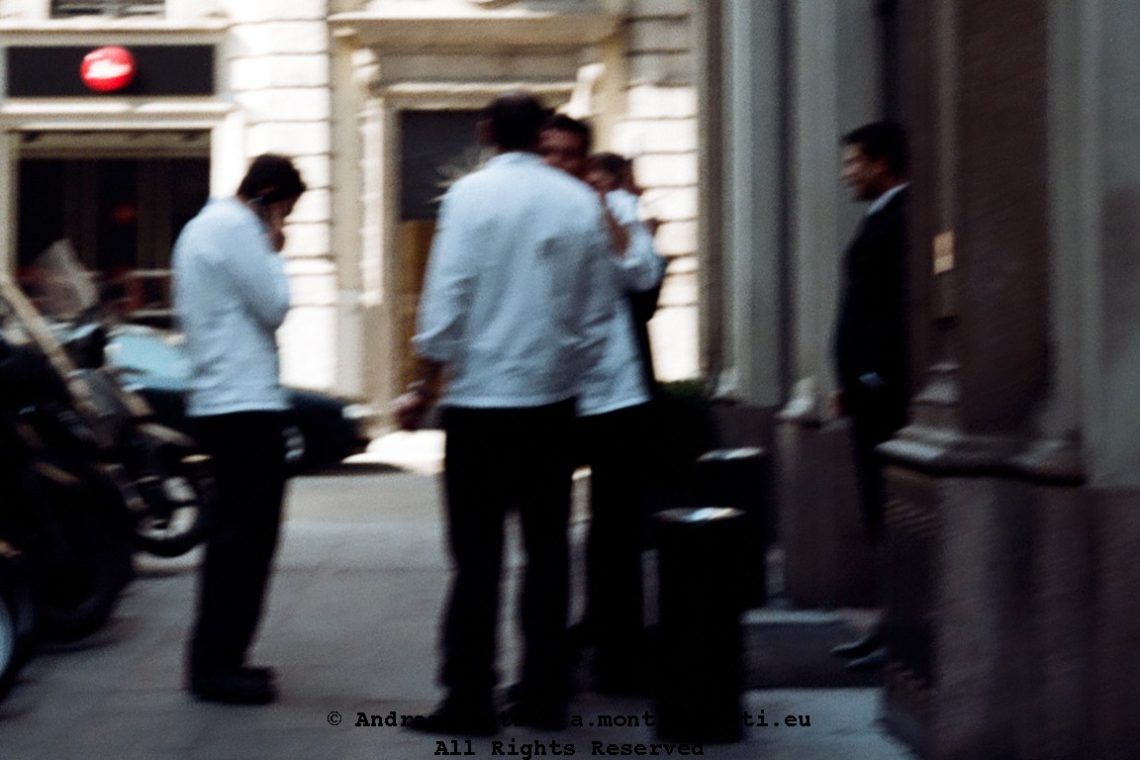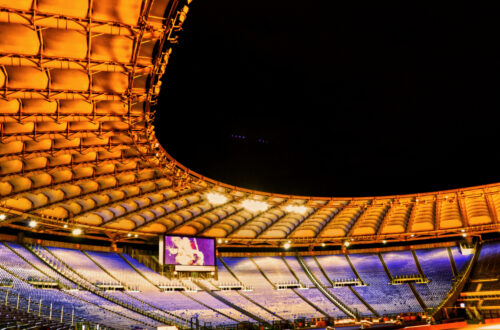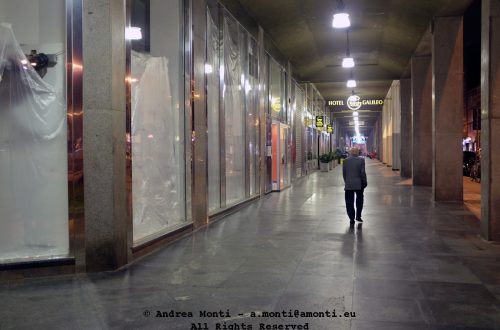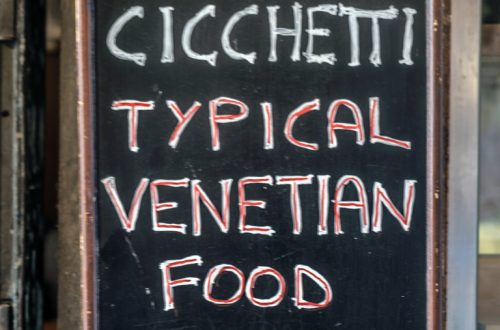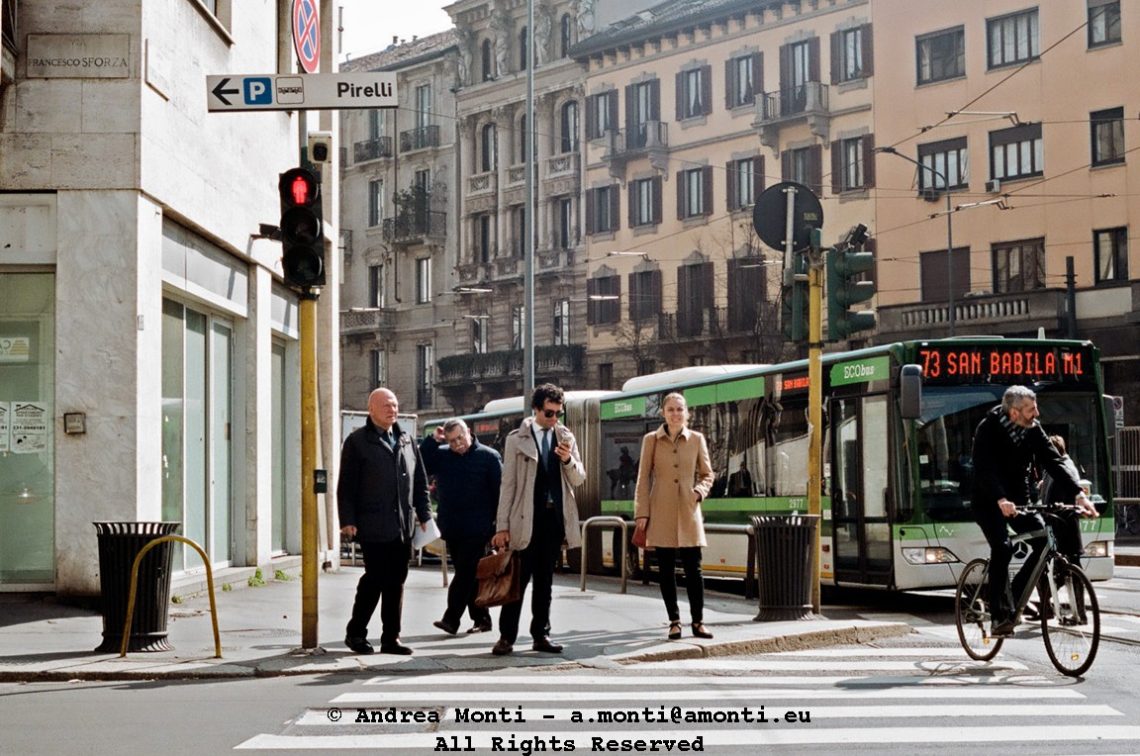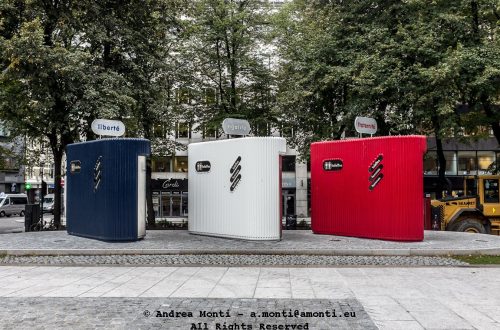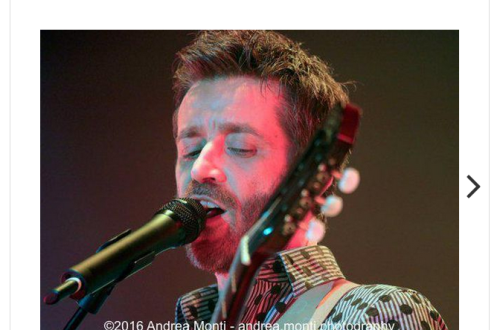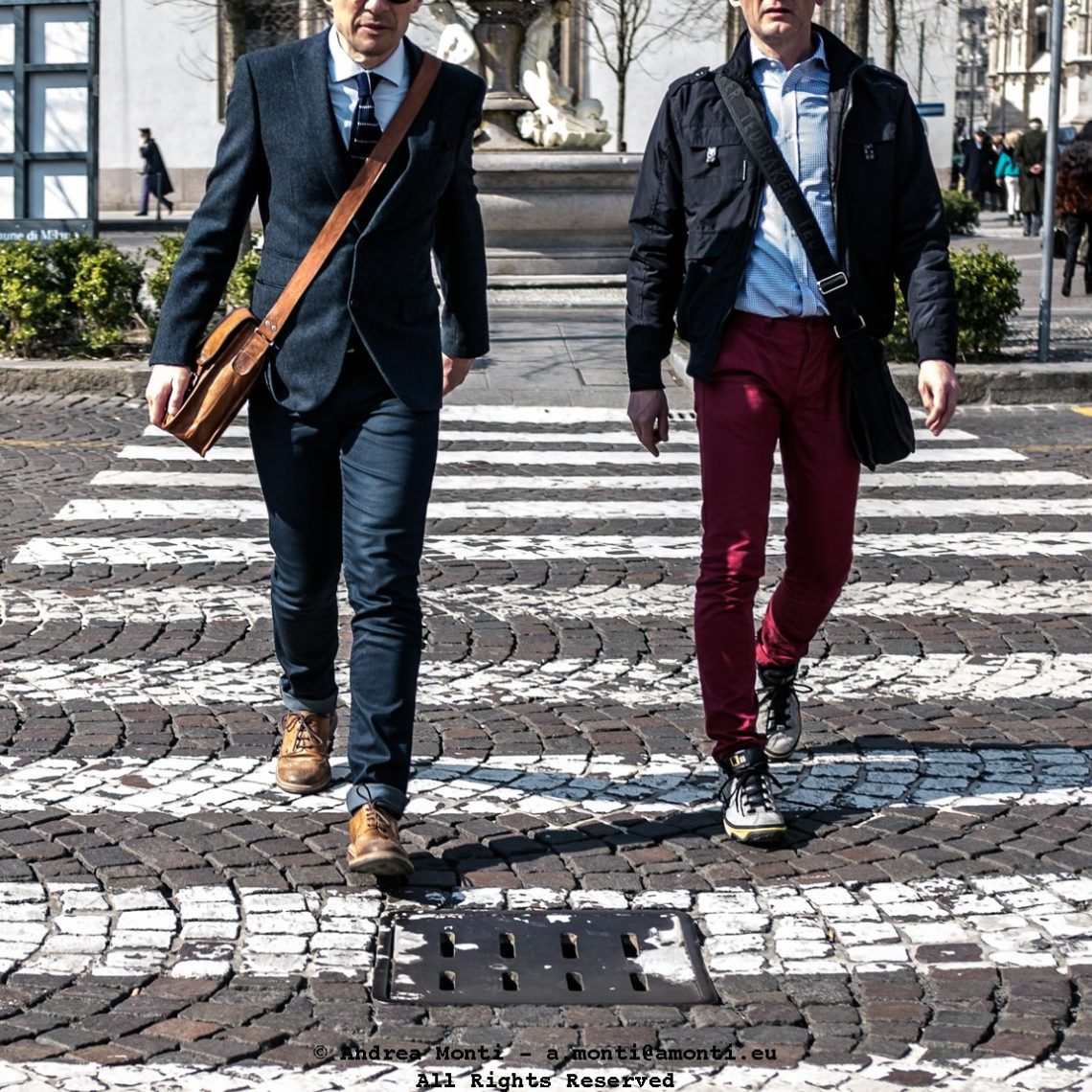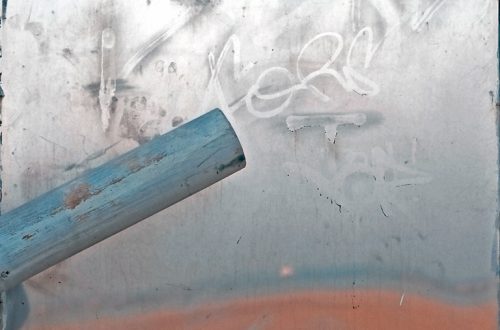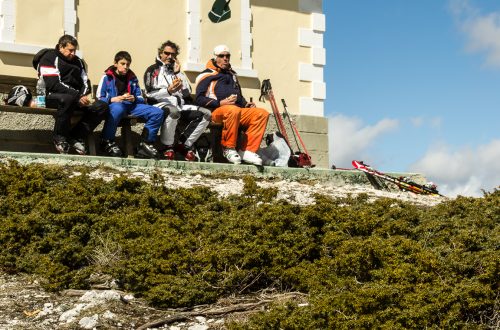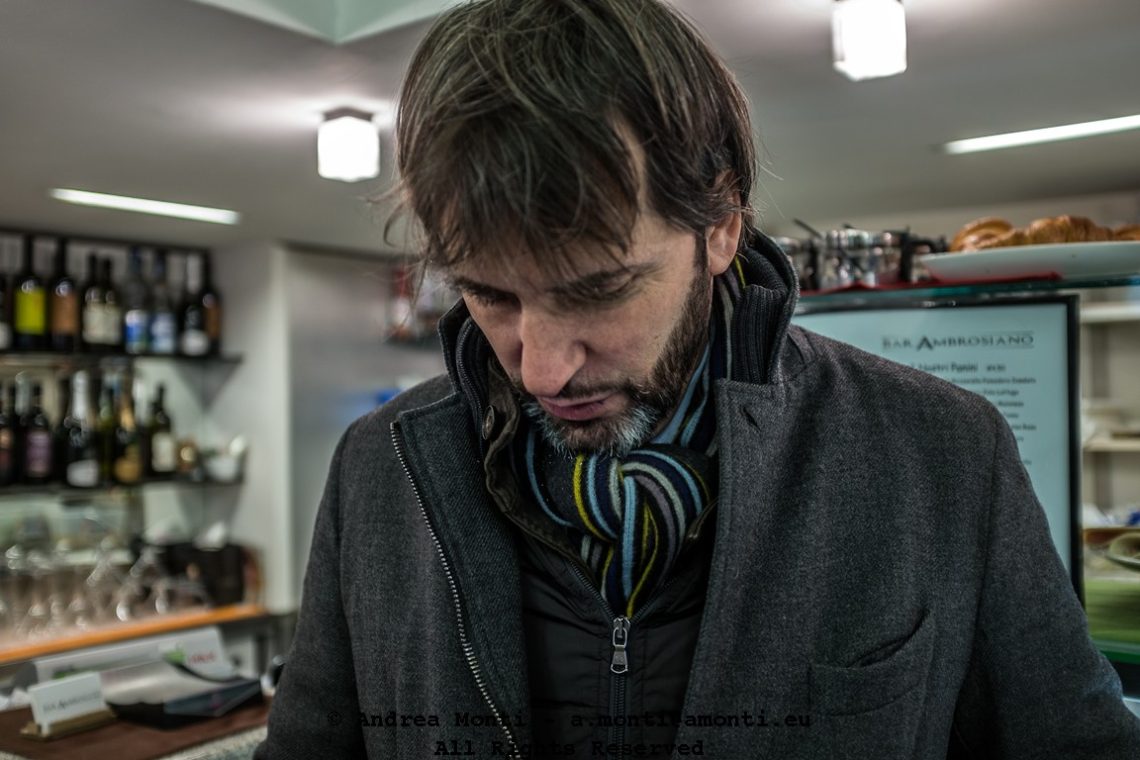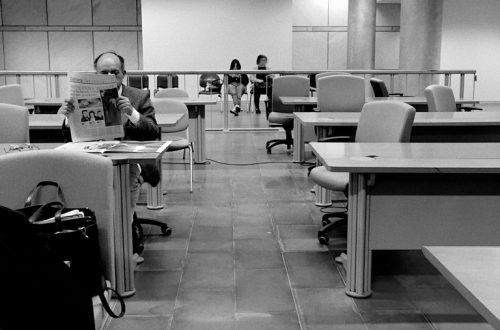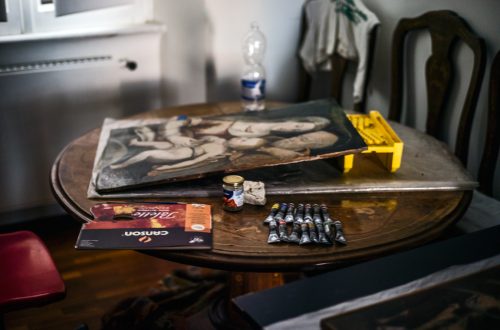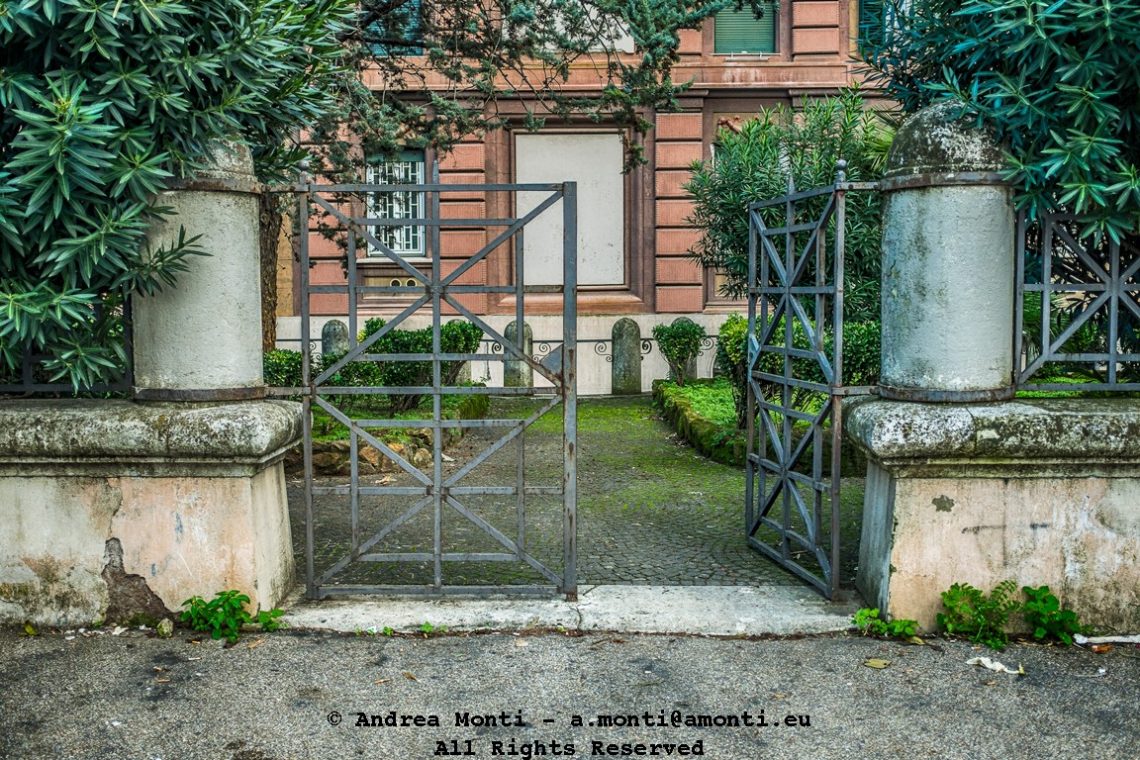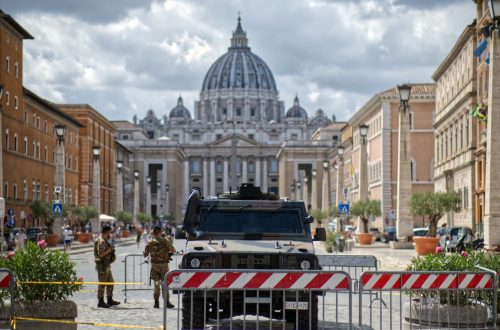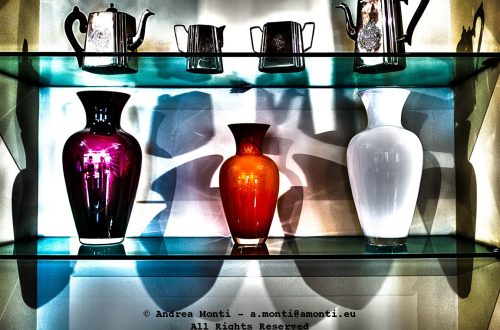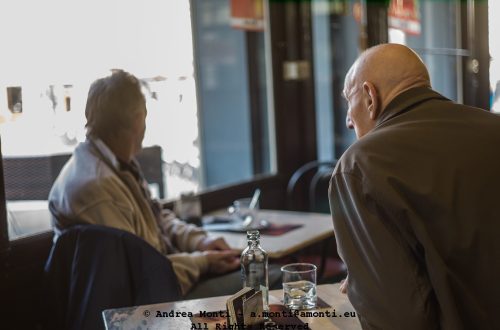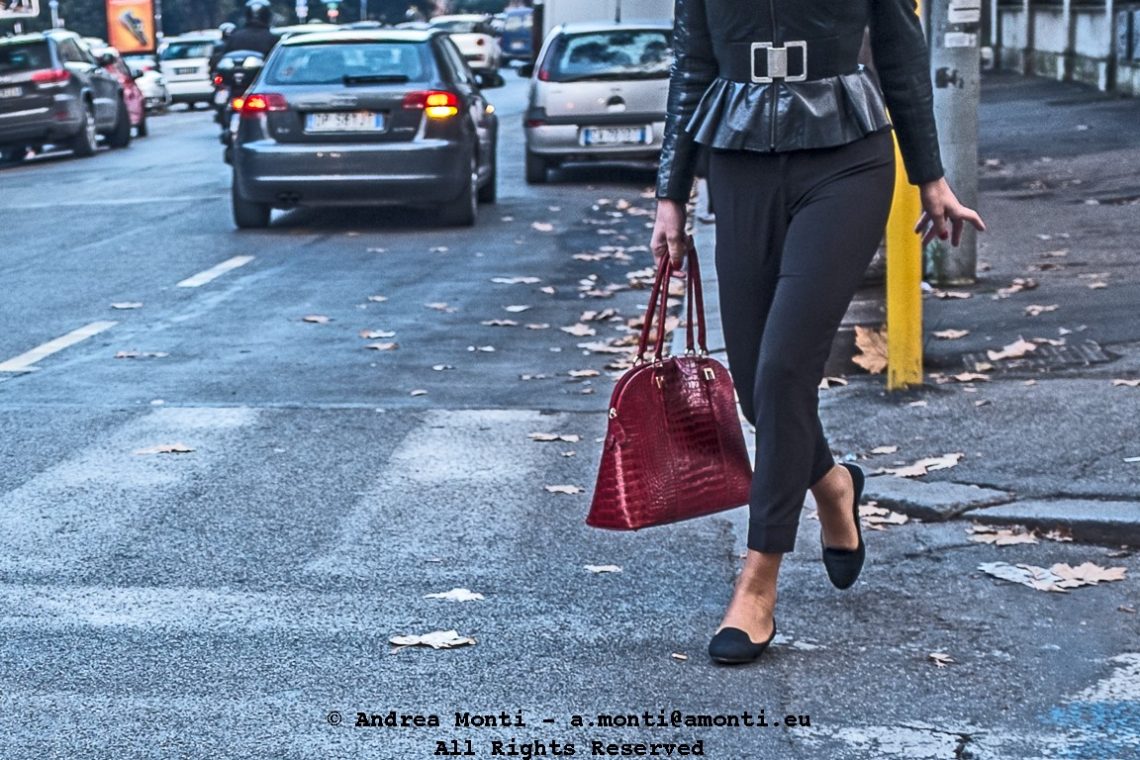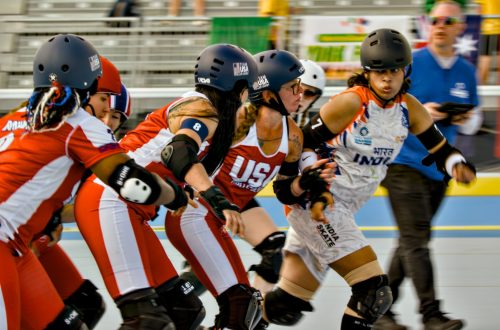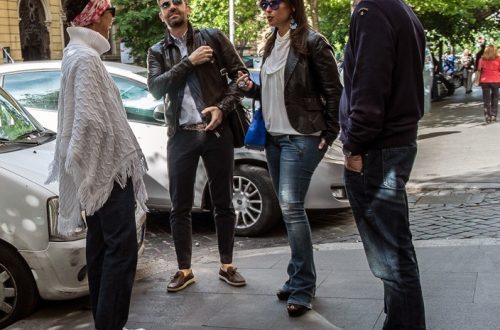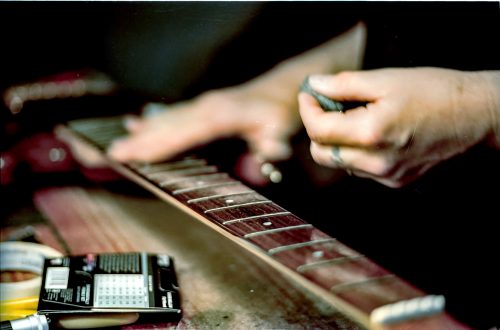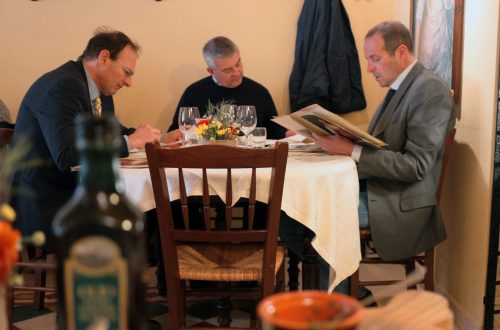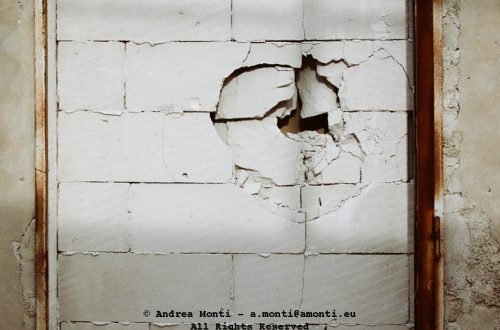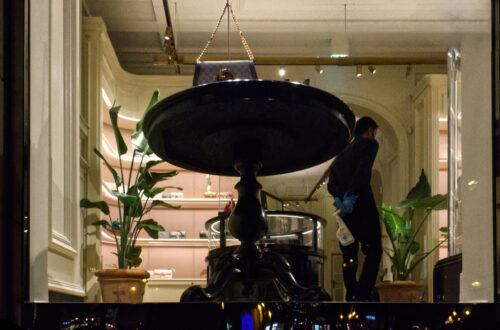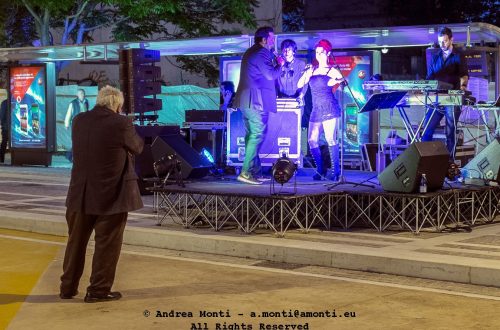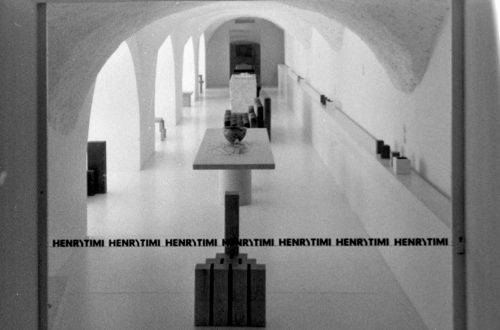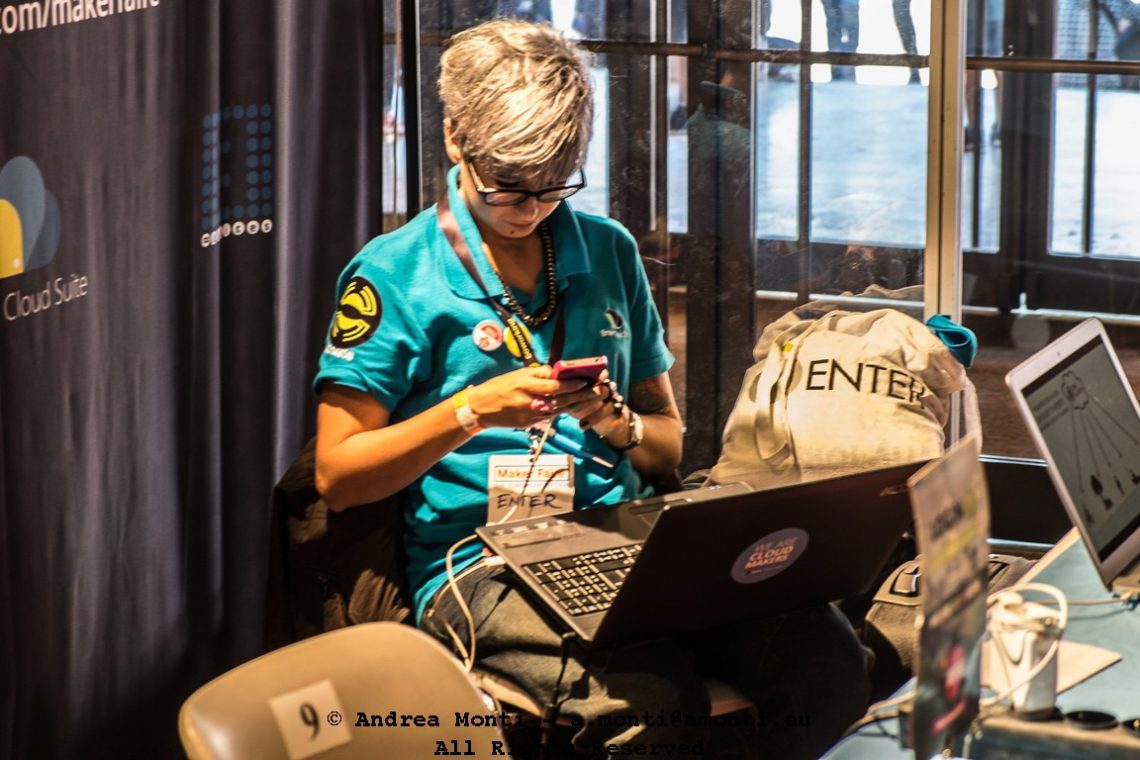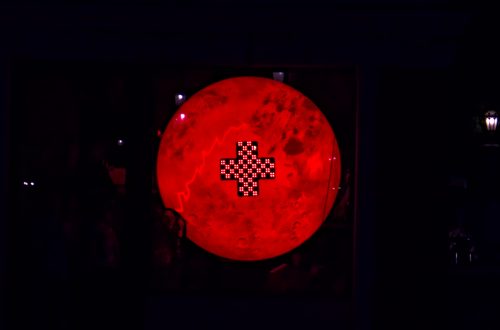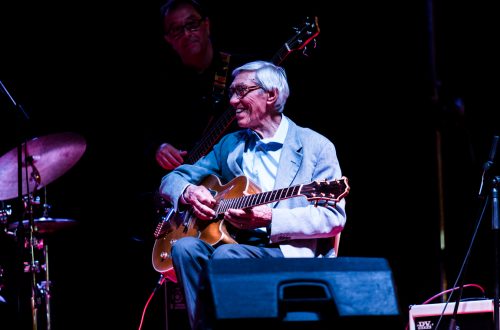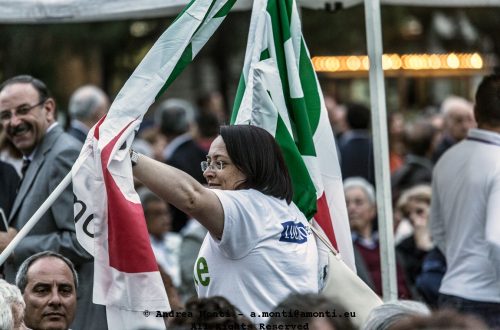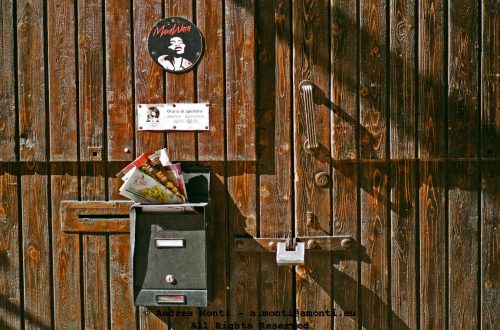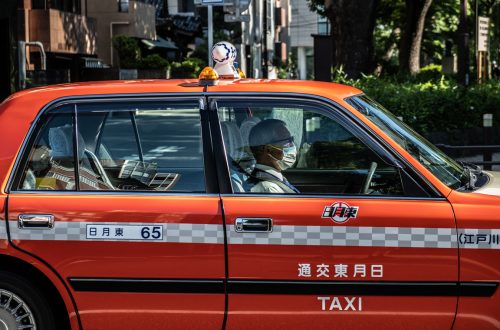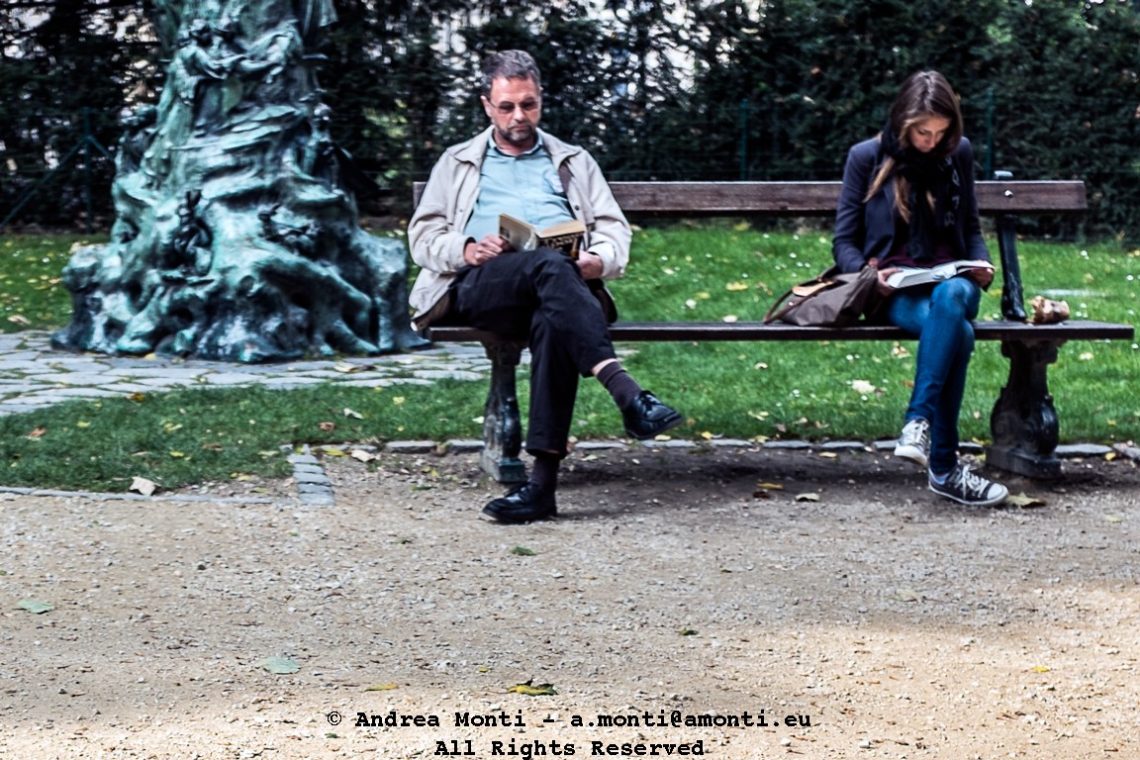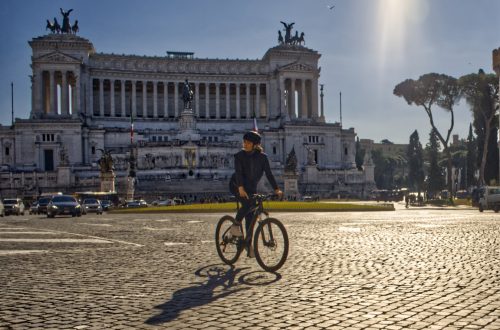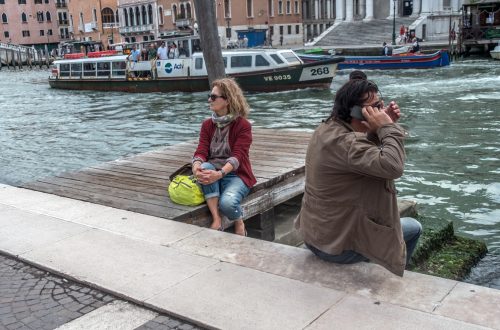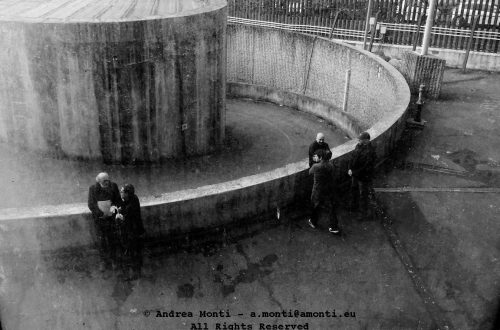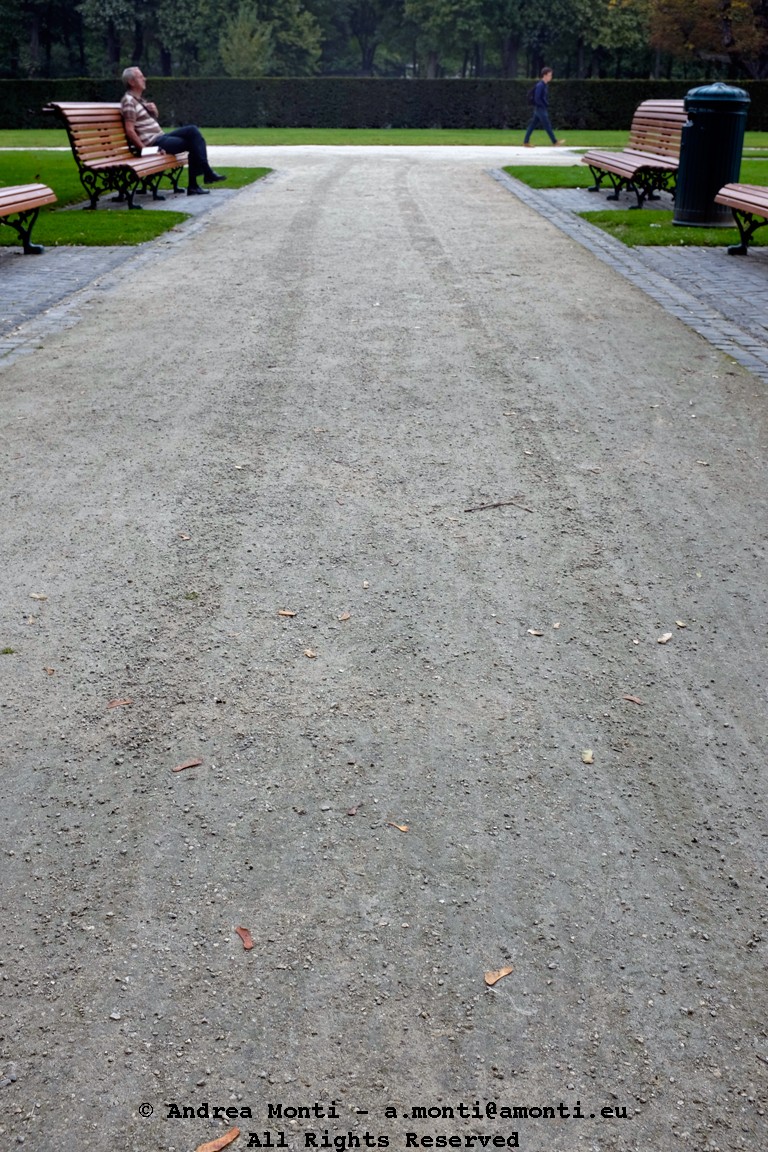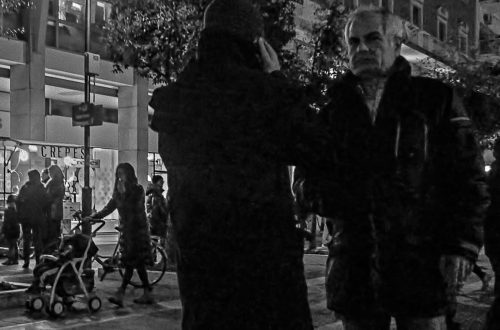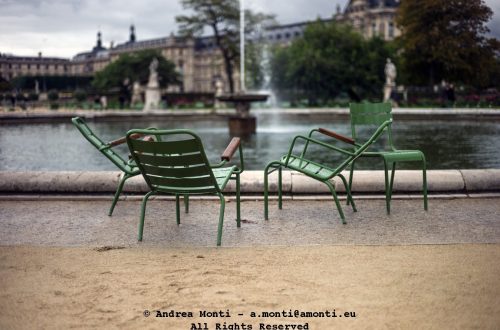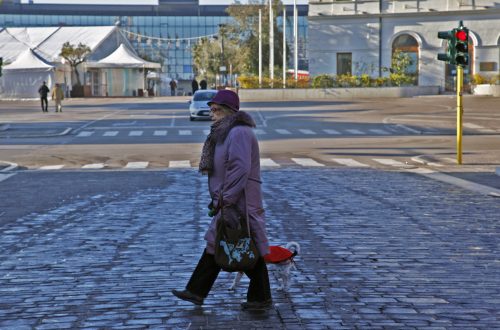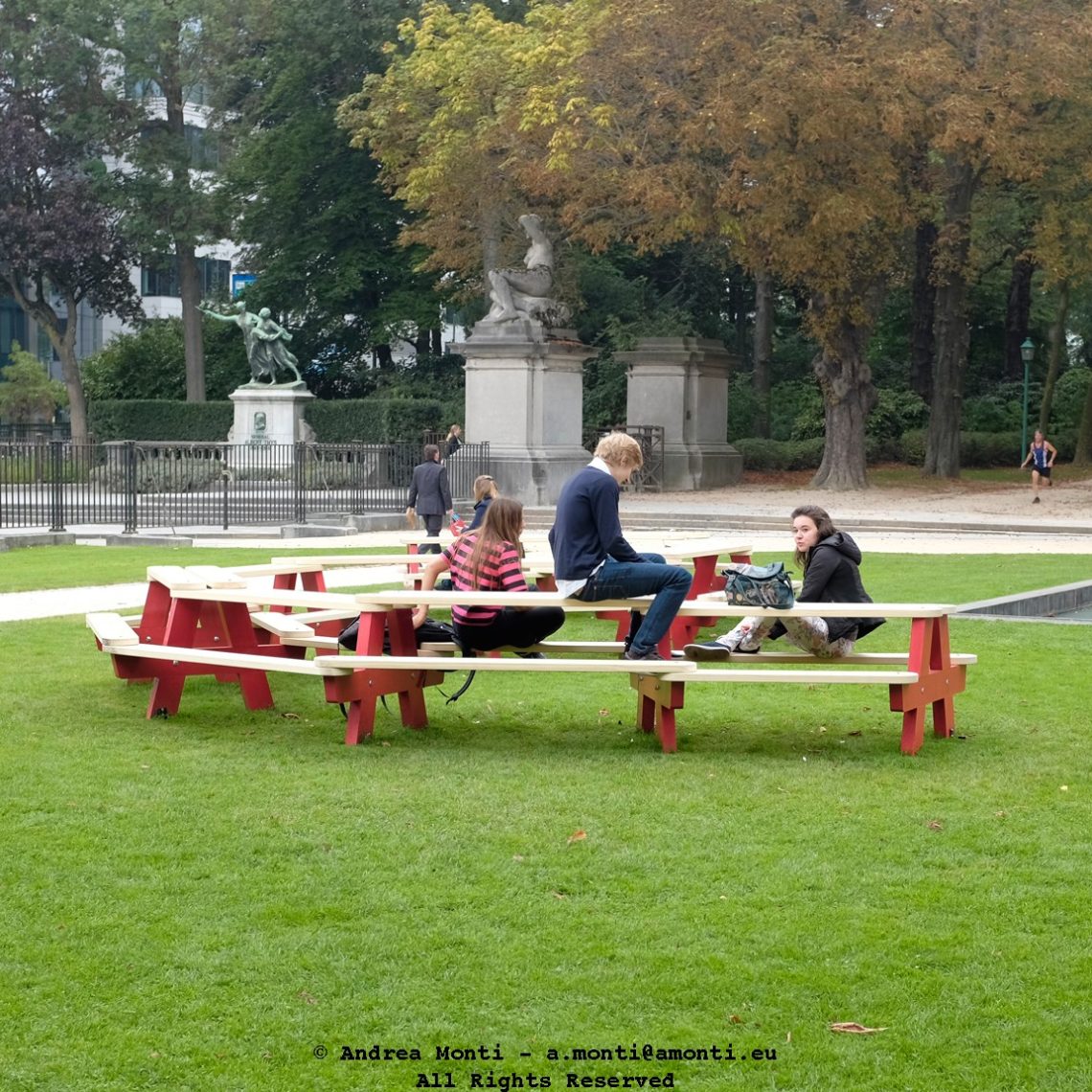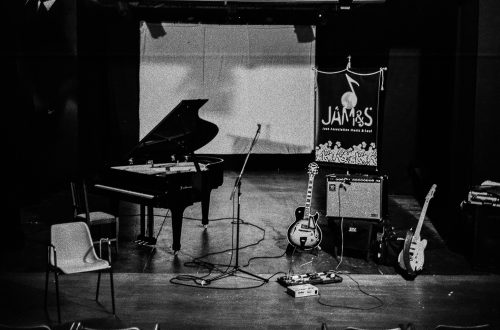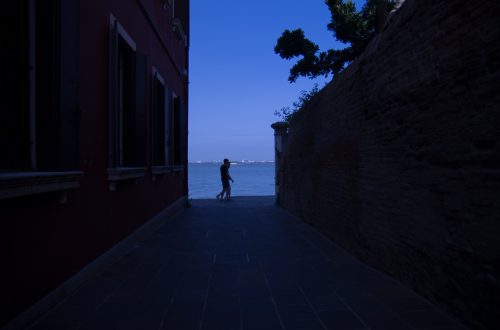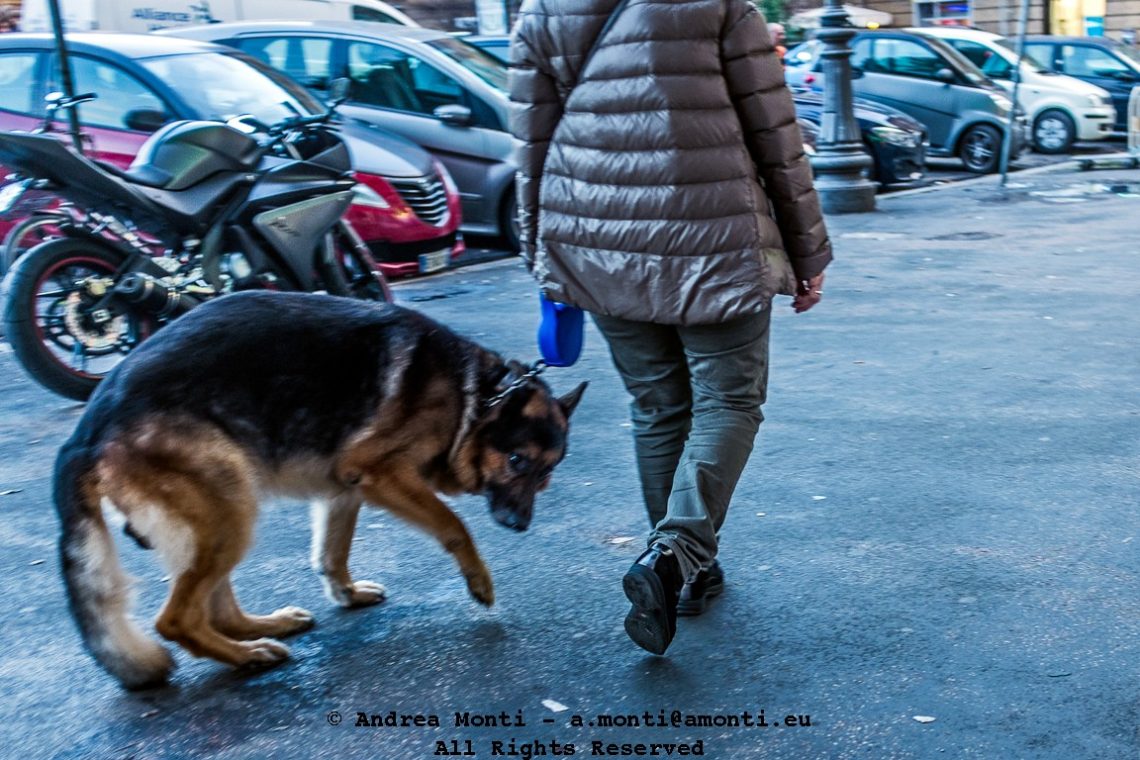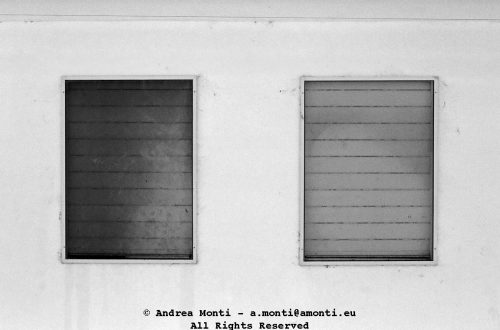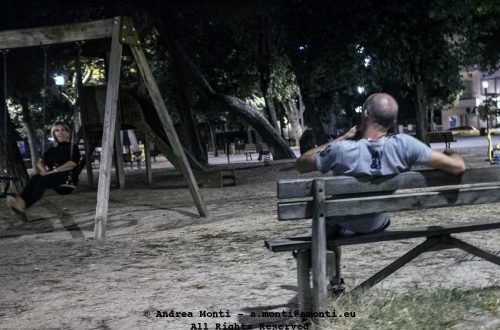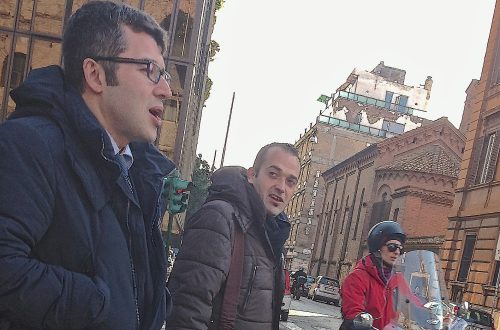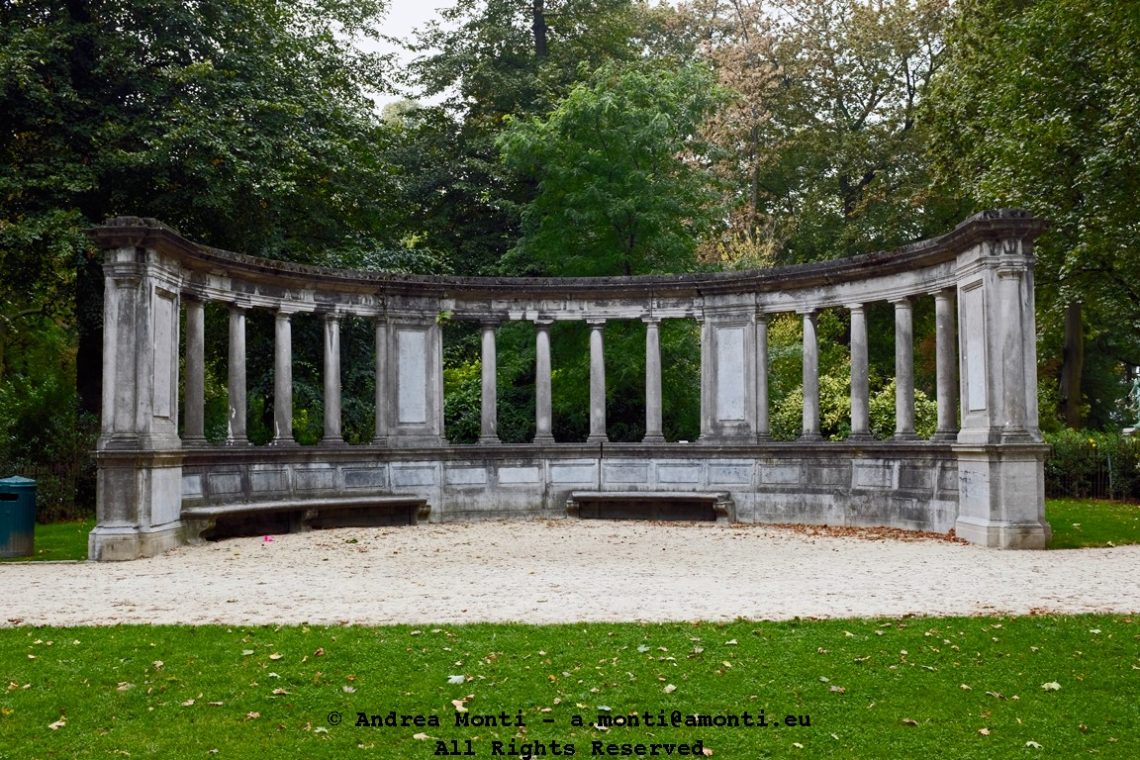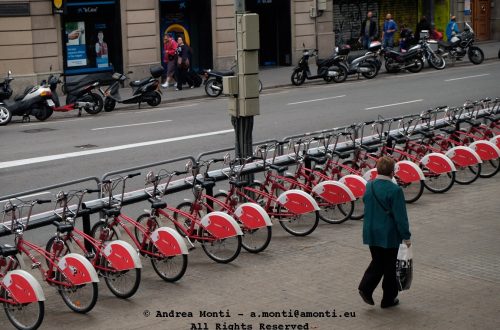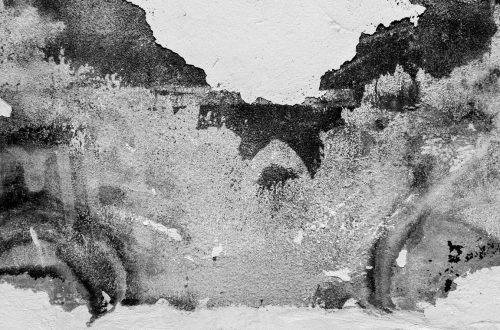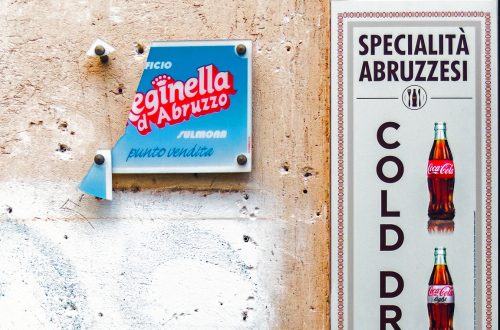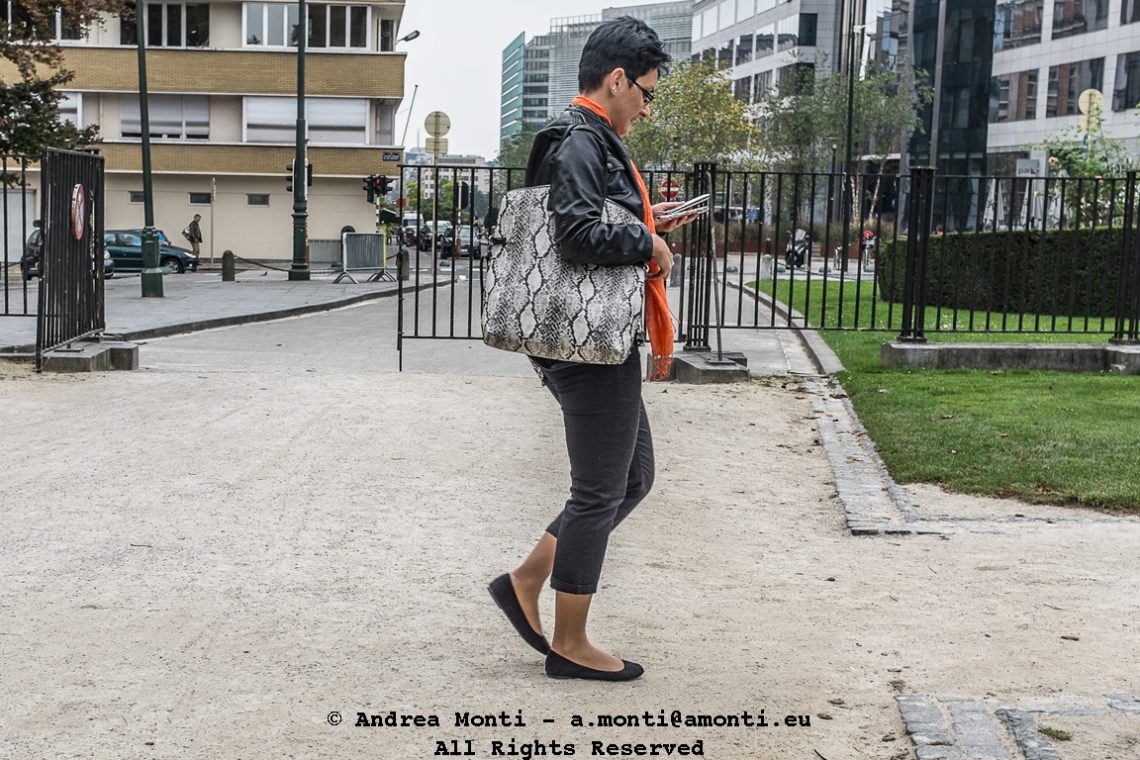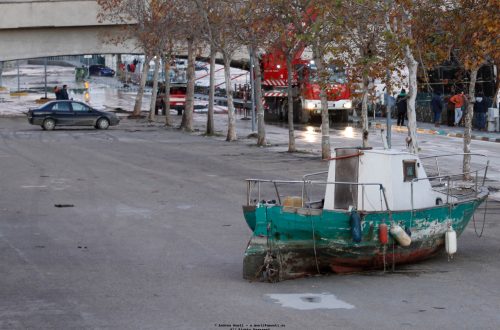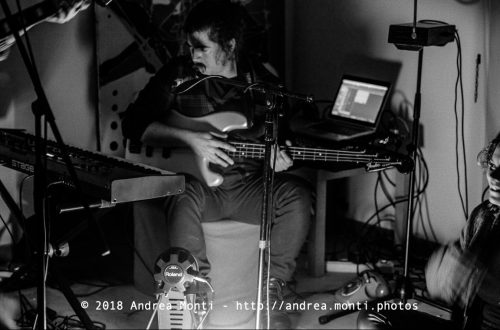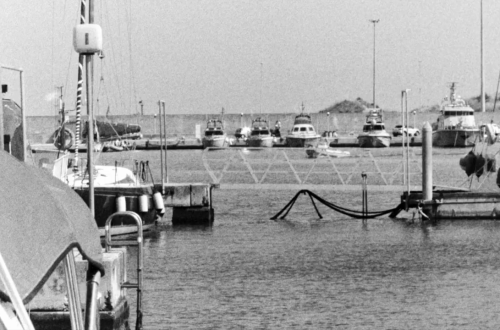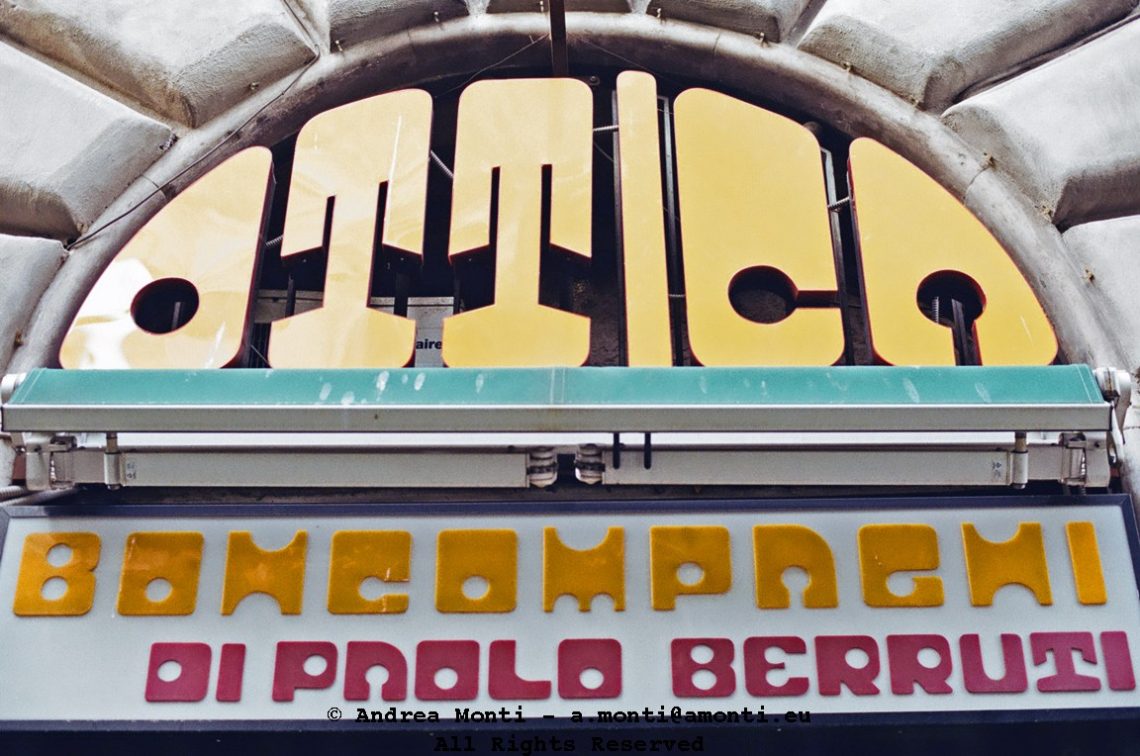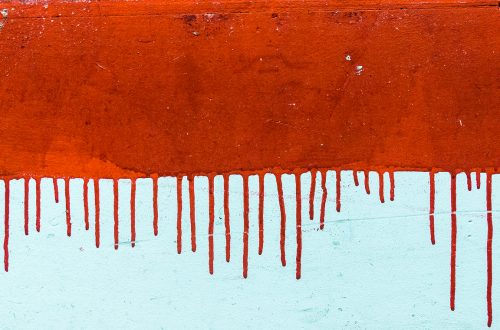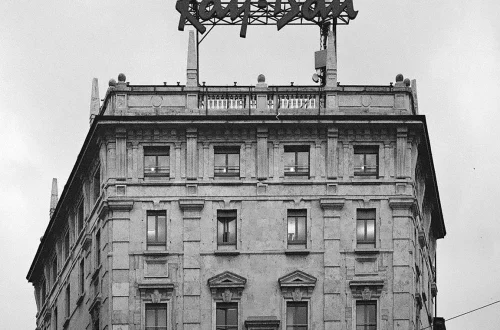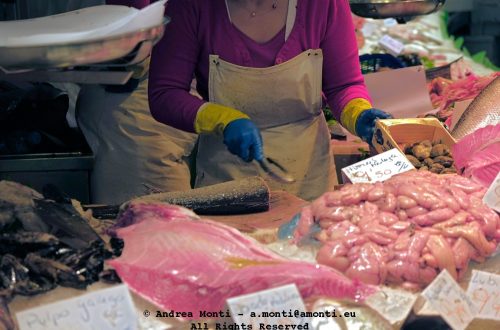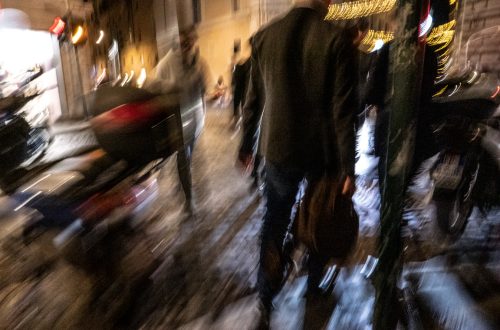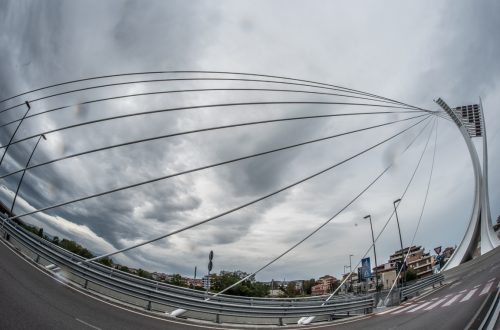-
Outside the Courthall
-
Behind the Glass
-
Arrested Behind the Door
Photographing in the criminal court of Rome is a peculiar experience — the air is thick with bureaucracy and human tension, yet most of it plays out behind closed doors. In this frame, the door is both a literal and symbolic barrier: clean, almost featureless, save for the taped sheet of paper outlining the rules of entry. It is stark in its message: access to the waiting room for the arrested is only permitted to lawyers, and only upon proof of formal appointment. Everything else — the people, their stories, their anxiety — remains hidden. From a compositional standpoint, I kept the framing tight and frontal. The geometry of the…
-
Room 17 – VIXI
The steel doors of Aula 17 stand closed, expressionless. Matte black, scratched, impassive. Above them, a bureaucratic sign: 7ᵃ Sezione, Edificio B. On the right, a board once meant to list names and hearings is now empty—washed clean by time or intention. Seventeen is an unlucky number in Italy. Rearranged, the Roman numerals XVII form VIXI—”I have lived”, an epitaph. And so, Room 17 becomes more than a courtroom. It becomes a threshold. A place where the living confront endings. The end of freedom. The end of illusions. Sometimes, the end of justice itself. The symmetry of the composition tightens the tension. Every element is locked in place. Nothing moves, and nothing is random.…
-
Legal Apartheid
Two elevators, side by side, divided not by function but by status. On the left, a small sign reads Pubblico. On the right, Avvocati. Between them, a strip of blank wall holds the call buttons and a standard notice: Non usare in caso di incendio. The symmetry is perfect, the contrast sharper for it. In the Court of Rome, this arrangement makes practical sense. Lawyers must move quickly between hearings; delays can derail the fragile timetable of justice. Efficiency demands a separate lift. And yet, looking at it here—reduced to a flat, black-and-white composition—the logic fades, and something else emerges. The brushed steel doors are marked with smudges and fingerprints, traces of the…
-
The Street Photographer Dilemma: Film or Digital
To me Street-Photography is digital. I missed this shot because I wasn’t able to properly focus my full-manual kit, as I would have do with an average digital camera. There is no point in wasting film in an highly fault-rate activity such as Street Photography.
-
Milan
There are street scenes that announce themselves loudly, and then there are those that slip into your view almost without you noticing—until the details start to unfold. This was the latter. I was standing at the corner of Via Francesco Sforza when the alignment of people, traffic, and light presented itself in a way that felt quintessentially Milanese. The group waiting at the crossing tells a quiet story of the city: a man lost in his phone, another holding a leather briefcase, a woman dressed sharply but practically, and a cyclist easing forward, impatient to move on. Behind them, the ECOBus—route 73 to San Babila—anchors the scene firmly in the…
-
Dress Different
According to the fashion-photography standards this is a perfectly usable shot. To me, that’s simply a missed photo.
-
Message Check Before Breakfast
This shot came together in the quiet seconds between espresso orders and the whir of the barista’s machine. I didn’t ask him to pose — I never do in moments like these. His posture, leaning forward, eyes fixed on the screen, scarf still clutched tight from the cold outside, told the full story. The light was unforgiving in its neutrality — ceiling fixtures and flat fluorescents don’t do any favours, but sometimes they just let the environment breathe. I pushed the ISO higher than I’d normally like, sacrificing a bit of cleanliness for immediacy. Still, the rendering holds: detail in the wool coat, a soft drop-off in the background, and…
-
Guest Are Welcome!
-
Red Bag, Black Shoes
This frame was taken at street level, quite literally. I crouched, waiting for the traffic to pause, and caught her mid-stride—ankle exposed, bag swinging low, oblivious to the lens just metres away. The choice of crop was deliberate. I wanted anonymity, but not detachment. By excluding the face, the image becomes less about the individual and more about the semiotics of presence—gesture, attire, movement, and the way we carve out identity with things. The red bag dominates the composition, not just chromatically but structurally. Its synthetic gloss, reptilian texture, and almost architectural form turn it into a visual anchor. It’s loud, assertive, unapologetic. And then, in counterpoint, the black shoes—quiet,…
-
A Lamppost
-
Life Within the Post Office
-
@ Rome’s Maker Faire – 6. Lost In Texting
-
Not Sure I Would Like The Feel
There’s something both fascinating and faintly unsettling about this photograph. At first glance, it’s a familiar object — a double bass, resting in its case, warm varnished wood catching the light. But then the eye meets the alien appendages: an elaborate framework of carbon-fibre rods, clamps, and actuators, bolted to the instrument’s body. Tradition and craft meet machine logic here, in a way that’s almost confrontational. From a compositional standpoint, the photographer has made a decisive choice to fill the frame with the instrument, anchoring it in the lower half while allowing the vertical lines of the robotic structure to carry the gaze upwards. The background, populated with drums, flight…
-
Avid Readers
-
Blow Up
-
Fun
-
Reluctant
It is a simple gesture, easily missed. But in that tension between movement and resistance lies a deeper reading of emotion and instinct. The dog, powerful and proud, lowers its head and anchors its weight as if reluctant to proceed—not from fear, but perhaps from nostalgia, uncertainty, or simply the inertia of old age. There is a moment of friction in this otherwise ordinary urban vignette: the human strides forward, while the dog—the loyal shadow, the constant companion—glances back, hesitates, drags its paws against the direction of motion. The leash, loosely held, is not a tool of command but a symbolic tether. It binds not through force, but through trust.…
-
Histoire d’O
Photography has a curious relationship with meaning. Sometimes it offers us a direct line to an obvious narrative; other times, it teases us with ambiguity, compelling the mind to reach for significance where perhaps none exists. This image—an aged, weathered architectural oval, framed in peeling plaster—belongs firmly in the latter category. Its title, Histoire d’O, borrows knowingly from the controversial novel of the same name, inviting the viewer to read into its form, its texture, and its emptiness. Technically, the photograph demonstrates a strong command of tonal control. The black-and-white treatment emphasises the interplay between texture and shadow, revealing the rough grain of the plaster, the fine cracks tracing across…
-
Columns
In Brussels, this curved colonnade sits like an architectural punctuation mark in the middle of a park — a statement without a sentence. I positioned the frame to face it directly, giving symmetry the upper hand. The central alignment was intentional: it allows the gentle arc of the structure to pull the eye from one end to the other without distraction. The light was flat, filtered by a heavy overcast, which meant no harsh contrasts or deep shadows. This helped preserve the fine details in the stone — the weathering, the subtle variations in tone — while keeping the surrounding foliage rich but not overpowering. The grey of the columns…
-
Orange Scarf
-
Ottica Boncompagni
Walking through the streets of Rome with a camera in hand, I often find that shopfronts—particularly those that stubbornly resist the homogenisation of modern branding—tell more about a city’s cultural fabric than any monument. Ottica Boncompagni, captured here in this image, is a perfect example. The sign is visually loud, unapologetically retro, and absolutely Roman. The heavy, rounded typography in ochre and crimson recalls a distinctly 1970s aesthetic—an era of optimism and visual experimentation that still clings to the façades of certain Roman quartieri. And yet, this is not kitsch. It’s lived-in design, aged not by affectation but by time and endurance. From a technical perspective, the composition sits squarely…
-
A Grocery Store in Rome
Some photographs emerge not from the pursuit of the exceptional, but from the quiet insistence of the everyday. This frame, captured in Rome, is one of them. I didn’t wait for decisive moments or orchestrate elements. I simply stood in front of this unassuming mini market, with its fluorescent signage blinking “COLD DRINKS” and “APERTO,” and let the banality speak. The storefront is wedged into a stone facade, a brutal contrast softened by the cluttered joy of cheap pleasures: laminated posters of ice creams, fizzy drinks stacked like bricks, and a faded theatre poster wedged between glossy wrappers. You can almost smell the dusty coolness inside — a refuge from…
